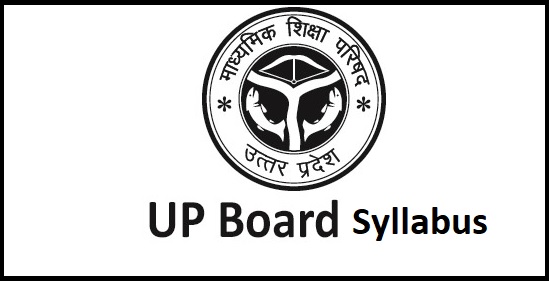UP Board Class 10th Social Science Syllabus (सामाजिक विज्ञान) 2024-25

It is very important from the students of UP Board class 10th to be familiar with the UP Board Class 10th Social Science syllabus 2024-25. This will give students clarity about the different chapters they have to study in a year. The board has designed the syllabus in such a way to give student understanding about history, geography, and economics of the country. Knowing the syllabus is crucial for a making proper strategy for exam preparation.
सामाजिक विज्ञान की परीक्षा में, लिखित प्रश्न पत्र 70 अंकों का होगा और प्रोजैक्ट कार्य 30 अंकों का होगा। यूपी बोर्ड की 10 वीं कक्षा के सामाजिक विज्ञान का पूरा सिलेबस इस पोस्ट में दिया गया है।
UP Board Class 10th Syllabus of Social Science 2024-25
The Social Science syllabus of UP Board 10th Class is divided into 4 units and project work. Before moving on the detailed topics, let’s check out the exam structure of Social science subject as given in the table below.
यूपी बोर्ड ने प्रोजैक्ट कार्य के साथ सामाजिक विज्ञान के पाठ्यक्रम को 4 इकाइयों में विभाजित किया है। सिलेबस चेक करने से पहले, आपको सामाजिक विज्ञान विषय की परीक्षा संरचना को समझना चाहिए जैसा कि टेबल में दिया गया है।
| Units | Name of Units | Marks |
| I | भारत और समकालीन विश्व – 2
India and the contemporary world – 2 (History) | 20 |
| II | समकालीन भारत – 2 (भूगोल)
Contemporary India – 2 (Geography) | 20 |
| III | लोकतान्त्रिक राजनीति (नागरिक शास्त्र)
Democratic politics (civics) | 15 |
| IV | आर्थिक विकास की समझ (अर्थशास्त्र) Understanding of economic development (Economics) | 15 |
| योग
Total | 70 | |
| प्रोजैक्ट कार्य
Project work | 30 | |
| कुल योग
Grand Total | 100 marks |
Unit-Wise Syllabus
India and the contemporary world – 2 (History)
Part I
- Rise of Nationalism in Europe
- Rise of Nationalism in Europe after 1830
- Thoughts of joseph mazzini etc.
- Characteristics of Poland, Hungary, Italy, Germany, and Greece Movements
- Nationalism in India
- Effects of 1st world war, Khilafat movement, Non-cooperation and Ideologies between different movements.
- Salt March (Dandi March)
- Movements of tribes, workers and farmers
- Limitations of Civil Disobedience Movement
- Sense of collective affinity

Part II
Career, Economy, and Society
- Creation of a modernized world
- Pre modern world
- 19th century (1815 – 1914) word Economy (Colonialism)
- Economic downturn amid the Great Wars (Great Depression)
- Rebuilding the world economy (starting of globalization)
- Era of industrialization
- Before the Industrial Revolution and the pace of industrial change
- Labor life
- Industrialization in the colonies
- Primary Entrepreneur and worker
- Irresistibility of Industrial development
- Market for products

Part III
Daily life, culture and politics
- Printing culture and the modern world
- History of printing in Europe
- Development of press in India in 19th Century
- Politics, public dispute, and relation in printing culture

Map work
History: Political map of India
Chapter – 3: Nationalism in India (1918 – 1930)
Showing and naming
- Sessions of Indian National Congress
- Calcutta (September, 1920)
- Nagpur (December, 1920)
- Madras (1927)
- Lahore (1929)
- Important Centres of Indian National Movement (Non-cooperation movement and civil disobedient movement)
- Champaran Bihar – Movement of Indigo farmers
- Kheda (Gujarat) – Kisan Satyagrah
- Ahmadabad (Gujarat) – Cotton mill worker satyagrah
- Amritsar (Punjab) – Jallianwalah Bagh Incident
- Chora-chori (Uttar Pradesh): Announcement of Non-cooperation movement.
- Dandi (Gujarat): civil disobedient movement

Unit – 2: Contemporary India – 2 (Geography)
Part I
- Resources and Development – Types – Natural and artificial resources, necessity of resources planning, Natural resources, Land as a resource, Type of soil and its distribution, Change in the format of land use, Methods to prevent Soil erosion
- Forest and Wild life resources – Flora and fauna in India, Forest in India and preservation of wild life.

- Water resources – resources, distribution, uses, multipurpose projects, water scarcity, need to management and conservation, Rain water harvesting.
- Agriculture – Types of Agriculture, main crops, crop format, technological and institutional improvement, contribution of agriculture in economy and generation of employment.
- Minerals and Energy resources: Type of minerals, distribution (only for Map), uses and economical importance of minerals, conservation, type of energy resources, conventional and non-conventional energy resources, distribution, uses and conservation.
Part II
- Manufacturing Industry: Type, Spatial distribution (only for maps), Contribution of industries in national economy, Industrial pollution and environmental degradation.
- Life of national economy: Importance of communication and transport mediums, business and tourism.
Map Work.
Geography: Political Map of India
Chapter 1: Resources and Development (Identification of major types of currencies)
Chapter 3: Water Resources (Showing and naming)

Dams
- Salal
- Bhakra Nangal Dam
- Tehri
- Rana Pratap Sagar
- Sardar Sarovar
- Hirakund
- Nagargun Sagar
- Tungbhadra (With Rivers)
Chapter – 4: Agriculture
Identification only
- Main areas of Rice and Wheat
- Main and Biggest Producing states: Sugarcane, Tea, Coffee, Rubber, Cotton and Jute.
Unit – 3: Democratic Politics (Civics)
Part I
Chapter I and II
Power Sharing and Fedrelism: Why and how is Power Sharing in Democratic Nations? How the federal sharing of power remain helpful in national unity? Up to what limit decentralization does fulfill this goal? How does democracy combine different social groups?
Chapter III and IV
- Democracy and Diversity
- Caste, Religion and Gender Matters
Is Partition inherent in democratic system? What is the impact of Caste on politics and politics on caste? How has gender differences affected politics? How communal differences affect democracy?

Part II
Chapter – 5
- Popular struggle and movements
- Political Parties – What is the role of political parties in Competition and Counter notification? What are the major national and state political parties in India?
- Results of Democracy
- Can democracy be judged from its results or should it be done?
- What can anyone reasonably expect from democracy? Does Indian democracy fulfill these expectations?
- Is democracy leading people to development, security, and dignity?
- Who keeps the democracy alive in India?
- Challenges to Democracy
- Is the ideology of democracy getting weaker?
- What are the major challenges in front of Indian democracy?
- How democracy can be improved and made stronger?
- What a common citizen can do to make democracy stronger?

Unit – 5 Understanding of Economical Development (Economics)
Part I
- Development: Traditional concept of development, National Income and per capita income, Income and other goals, Average income, Income and different parameters, Infant mortality rate, wear growth.
- Scopes of Indian economy: Areas of Economic activities, Historical changes in scopes, Growing importance of tertiary sector, Employment generation, Division of work areas – organized and non-organized, Measures to protect workers in unorganized sectors
- Currency and credit: Role of currency in economy, Formal and informal financial institutions for savings and credit – general introduction, a formal institution such as a nationalized commercial bank and some informal financial institution should be selected, local moneylender, zamindar, chit fund and private financial companies

Part II
- Globalization and Indian Economy: Production in different countries, foreign trade and connecting different markets, what is globalization? Factor, world trade organization (WTO), influence, justified globalization.
- Consumer rights: How is the consumer exploited? (With one or two case studies), reasons for consumer exploitation, rise of consumer awareness, How should be a consumer of the market? Role of government in consumer protection.

Project work


Internal Exams
- 1st Internal Exam (Project work/ assignment) August Month – 10 Marks
- 2nd Internal Exam (Project work/ assignment) December Month – 10 Marks
- Four Monthly Exams – 10 Marks
- 1st Monthly Exam (Based on MCQs) – May
- 2nd Monthly Exam (Objective Questions) – July
- 3rd Monthly Exam (Based on MCQs) – November
- 4th Monthly Exam (Objective Questions) – December
Other Subjects Syllabus: Check here



thankyou sir this syllabus is very helpful for me
I think this is a right syllabus for class 10 of 2022 ,-2023
यह बात सामने आई है
2022-23 ka syllabus send kar dijiye
2022-2023 ka syllabus send kr dijiye
Sir sst ka syllabus
Sir syllabus 2021.22ka send Kar dijiye sabhi subject ka plz
Sir syllabus 2021.22 Ka send Kar dijiye sabhi subject Ka plz